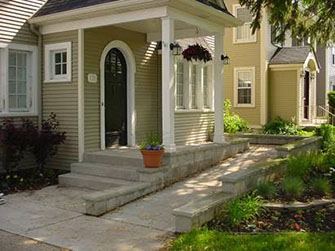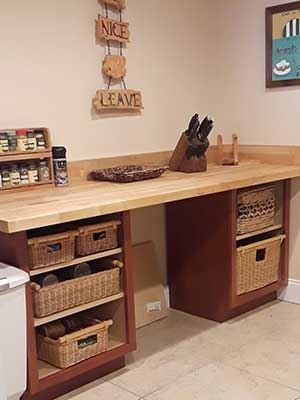Your Home
Home Modification Ideas, Options & Links
Our comfort at home is critical to how we build a good life with a disability. By making it easier to feed ourselves, sleep, bathe, use a toilet, and go about everyday living, the right accommodations can mean everything.
Finding available options and choosing which ones to buy/implement can be a real balancing act.
- Can I afford to remodel or can I get by with simpler solutions?
- Should I work with an Occupational Therapist or some other type of professional?
- What if I can’t find a product that works for my situation?
- Will the accommodations I receive today help me if my disability gets worse?

Simple Solutions first: Although adjusting to new disabilities can feel overwhelming, we have found that in most cases the smallest simplest modifications can produce some very meaningful results. And by doing so, they can clear up our thinking to make additional actions easier to evaluate.
Occupational therapists are trained to work with individuals to identify ways for them to continue “doing the activities that matter most to them”. They are often a good place to start and can be very helpful, particularly when they really understand our unique priorities. One size definitely does not fit all!
Acquiring Solutions: – These days an increasing number of publications and organizations are putting out information about making homes “senior-friendly” – which can be code for “disability-friendly”. AARP and many insurance companies have programs that we can utilize even though we develop, or may have developed, disabilities well before we would classify ourselves as seniors.
There are numerous home health aid catalogues and websites featuring a broad array of products. Periodically looking through these can give us many ideas and options! These are a few of the consumer catalogues we’ve used.
In addition, physical and occupational therapists use an even larger selection of specialty product suppliers. Such as:
And, beyond all this, there’s always Amazon, too. Through all kinds of different challenges, we’ve found great products to support us when we’re unsteady, help us reach or see things when we can’t stand up, grab or move things when our hands are weak. It often feels like every problem that we have has been faced by others before us, and fortunately, someone has created a product to address it.

Custom Solutions
Occasionally our problems and our environment are so unique that the available products don’t quite address them. For these, a creative approach is needed. We find ourselves using existing products in new and special ways or we “build” our own products from materials we have available. The most important lesson we’ve learned is that few problems are so great that they can’t be overcome with a bit of ingenuity.
Big Solutions
Sometimes the need to accommodate our disabilities can be so significant that even collections of small solutions are not enough. It is helpful for each of us to regularly look at our environments objectively, to see if they can work better for us. And these evaluations can lead us to accept larger changes.
Remodeling
Ideally, making homes handicapped accessible can make them better for everyone and, when done well, the changes can even be more attractive. But, in reality, changes require many trade-offs involving the minimizing of costs, maintaining or improving of your property’s value, and choosing how accessible everything needs to be (for example choosing between high versus low cabinets). We are finding more and more builders and contractors positioning themselves as senior or disability friendly and that can be a good place to start. Deciding where to start depends on the disability, the home, the areas of greatest danger or difficulty, and, of course, the available funds.
Entrances
Many homes do not have entrances that accommodate wheelchairs or walkers. If modifying front stairs would result in an unattractive and still difficult “solution,” we have found that modifying garage, side door or back entrances can be quite acceptable alternatives.
Bathrooms
Often older bathrooms are small and difficult to navigate. And, because bathroom re-models can be quite expensive, many people hold off on doing so as long as possible. But not making them accessible and safe is, ultimately, not an option. A low cost first step is installing grab bars in key locations. These, alone, make bathrooms significantly safer. In addition, a commode chair positioned over a toilet and shower benches placed in bathtubs can be excellent short-term accommodations. Full remodels can include roll-in showers with benches and elevated toilets.
Moving
It is rare for people to move just to gain accessibility, but often, other life events can support these choices. We have consistently seen the stage of becoming empty-nesters as the point when houses are sold and single story condos are bought. But simply choosing smaller, single-story homes may not be enough. Even new homes must be evaluated and often modified, to provide safe, comfortable access. The reality of buying, building or renting a home is that we can require appropriate modifications before we “sign on the dotted line!”
We hope that this is helpful to you as you continue to create your accessible home!
Helpful Sites:
